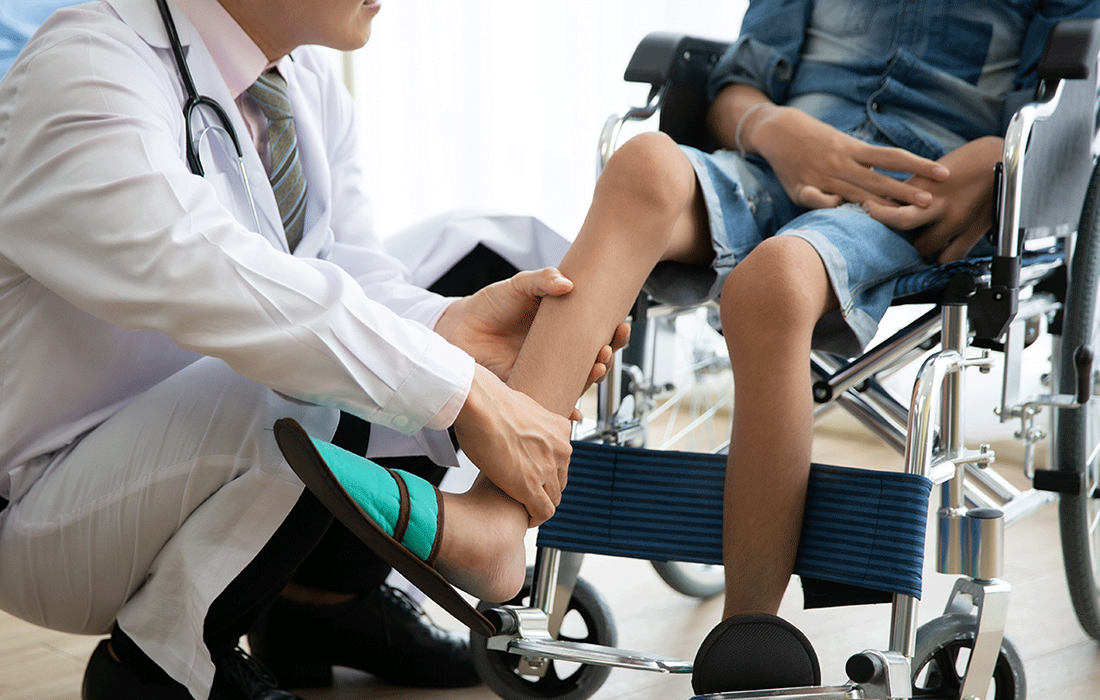Regenerative Medicine News and General Information
Cell Treatment Shows Promise to Delayed the Progression of Duchenne Muscular Dystrophy
Muscular dystrophy (MD) is a collective group of inherited noninflammatory but progressive muscle disorders without a central or peripheral nerve abnormality. The disease affects the muscles with definite fiber degeneration but without evidence of morphologic aberrations.
Duchenne muscular dystrophy (DMD) is a rare, inherited disorder that mostly affects males. It’s caused by mutations on a gene on the X chromosome that interferes with the production of a protein called dystrophin that muscles need to function. Children born with such mutations have muscle weakness throughout their bodies. This makes it difficult for them to do normal activities like run, jump, climb stairs, stand up after sitting and pedal a bicycle. They can also become extremely sick when muscles in their hearts and respiratory organs weaken.
Muscle breakdown in Duchenne muscular dystrophy triggers inflammation and maladaptive immune responses, which further limit intrinsic muscle repair capability.
The prognosis for patients with Duchenne muscular dystrophy is bleak. Most use a wheelchair by the time they are teenagers and don’t typically live into their 30s. There is no cure for the disease. Currently, the only approved medical treatments are aimed at delaying loss of the ability to walk; nothing is available for patients with more advanced disease, who now outnumber those with milder symptoms.
A cell therapy developed by the executive director of the Smidt Heart Institute stabilizes weakened muscles-including the heart muscle-in Duchenne muscular dystrophy patients
Cardiosphere-derived cells (CDCs) are a type of stromal or progenitor cell that has been shown in preclinical and clinical studies to exert immunomodulatory, antifibrotic, and regenerative actions in dystrophinopathy and heart failure . CDCs act by secreting extracellular vesicles known as exosomes, which target macrophages and alter their expression profile so that they adopt a healing, rather than a pro-inflammatory, phenotype. Exosomes secreted by CDCs also reprogramme fibroblasts, rendering them antifibrotic.
In the mdx mouse model of Duchenne muscular dystrophy, CDCs reverse the dystrophic phenotype and improve ambulatory capacity and survival by reducing pro-inflammatory cytokines, and altering expression of genes related to oxidative stress, inflammation, mitochondrial integrity, and muscle regeneration.
Eduardo Marbán, MD, PhD, executive director of the Smidt Heart Institute at Cedars-Sinai, the Mark S. Siegel Family Foundation Distinguished Professor, an author on the study and the inventor of cardiosphere-derived cells (CDCs), progenitor cells derived from human heart tissue, which have been used in multiple clinical trials, did a study using CDCs based therapy.
The study included 20 boys from multiple hospitals across the U.S. All were 10 or older and all had Duchenne muscular dystrophy.
Each patient in the trial had what investigators classified as “moderate upper limb impairment,” meaning their function ranged from being able to raise both arms simultaneously above their heads by flexing at the elbow to being able to raise one or two hands to the mouth, but not bring a cup to it.
Eight children were randomly assigned to receive the cell therapy and 12 were randomly assigned to receive the placebo. The cells and placebo were administered intravenously every three months for a year. The study was double-blinded, meaning neither the doctors nor patients knew who was getting the treatment or placebo.
Results showed patients who were given CAP-1002 experienced less loss of ability in their upper limbs after 12 months than patients who received the placebo. Although children given CAP-1002 still lost some upper limb movement during that period, they did so at a rate that was 71% slower than in children who didn’t receive the therapy.
Heart function also improved in children given the cell-based therapy versus the placebo — an important finding since heart failure is a main cause of death in people with Duchenne muscular dystrophy.
The treatment appears to be safe. One child experienced a severe allergic reaction to CAP-1002 during a second intravenous infusion and required an injection of epinephrine and hospitalization. After that, the investigators put the children on a pre-treatment drug regimen to reduce the risk of allergic reactions. Only one child experienced an allergic reaction after this was implemented, and he did not require medication or hospitalization.
These findings show the promise of cell therapy in preventing the progression of heart disease in a rare genetic disease, but there is good reason to believe that such therapy may one day be used for more common forms of heart failure. More studies are needed to learn whether the effects of this therapy last longer than 12 months and prolong the lives of children with DMD.
SOURCE:
Craig M McDonald, Eduardo Marbán, Suzanne Hendrix, Nathaniel Hogan, Rachel Ruckdeschel Smith, Michelle Eagle, Richard S Finkel, Cuixia Tian, Joanne Janas, Matthew M Harmelink, Arun S Varadhachary, Michael D Taylor, Kan N Hor, Oscar H Mayer, Erik K Henricson, Pat Furlong, Deborah D Ascheim, Siegfried Rogy, Paula Williams, Linda Marbán, Russell Butterfield, Anne Connolly, (March 12 , 2022). Repeated intravenous cardiosphere-derived cell therapy in late-stage Duchenne muscular dystrophy (HOPE-2): a multicentre, randomised, double-blind, placebo-controlled, phase 2 trial. The Lancet. Retrieved from : https://www.thelancet.com/journals/lancet/article/PIIS0140-6736(22)00012-5/fulltext

